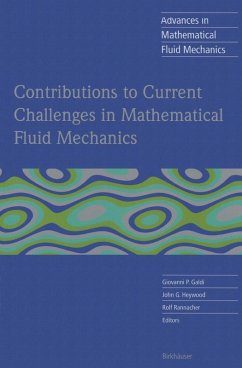This volume consists of five research articles, each dedicated to a significant topic in the mathematical theory of the Navier-Stokes equations, for compressible and incompressible fluids, and to related questions. All results given here are new and represent a noticeable contribution to the subject. One of the most famous predictions of the Kolmogorov theory of turbulence is the so-called Kolmogorov-obukhov five-thirds law. As is known, this law is heuristic and, to date, there is no rigorous justification. The article of A. Biryuk deals with the Cauchy problem for a multi-dimensional Burgers equation with periodic boundary conditions. Estimates in suitable norms for the corresponding solutions are derived for "large" Reynolds numbers, and their relation with the Kolmogorov-Obukhov law are discussed. Similar estimates are also obtained for the Navier-Stokes equation. In the late sixties J. L. Lions introduced a "perturbation" of the Navier Stokes equations in which he added in the linear momentum equation the hyper dissipative term (-Ll),Bu, f3 ~ 5/4, where Ll is the Laplace operator. This term is referred to as an "artificial" viscosity. Even though it is not physically moti vated, artificial viscosity has proved a useful device in numerical simulations of the Navier-Stokes equations at high Reynolds numbers. The paper of of D. Chae and J. Lee investigates the global well-posedness of a modification of the Navier Stokes equation similar to that introduced by Lions, but where now the original dissipative term -Llu is replaced by (-Ll)O:u, 0 S Ct < 5/4.
Dieser Download kann aus rechtlichen Gründen nur mit Rechnungsadresse in A, B, BG, CY, CZ, D, DK, EW, E, FIN, F, GR, HR, H, IRL, I, LT, L, LR, M, NL, PL, P, R, S, SLO, SK ausgeliefert werden.

